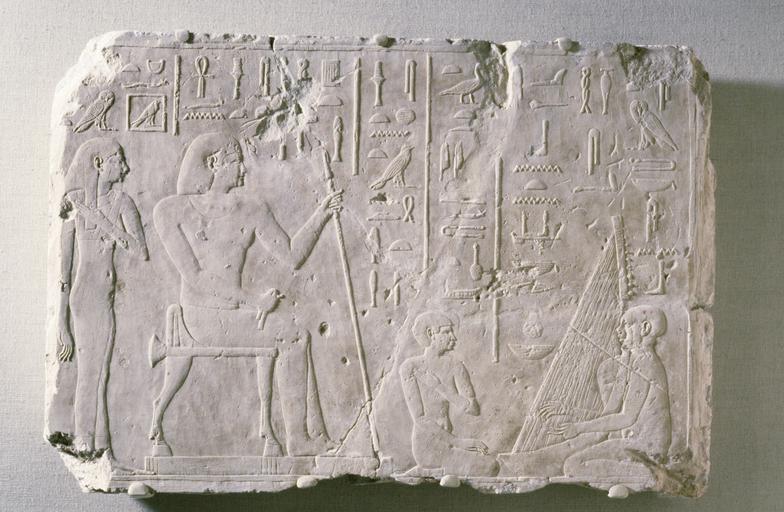MAKE A MEME
View Large Image

| View Original: | Egyptian_-_Ankh-ef-en-Sekhmet_Entertained_by_a_Harpist_-_Walters_2238.jpg (1800x1175) | |||
| Download: | Original | Medium | Small | Thumb |
| Courtesy of: | commons.wikimedia.org | More Like This | ||
| Keywords: Egyptian - Ankh-ef-en-Sekhmet Entertained by a Harpist - Walters 2238.jpg Late Period interest in the past is clearly demonstrated in this work whose composition clothing and poses all recall Old Kingdom and Middle Kingdom works Details such as the crisp precision of the carving and the presence of personal names date the piece to the Late Period It shows its owners Ankh-ef-en-Sekhmet and his wife Hathor-em-hat to the viewer's left Their daughter with close-cropped hair kneels at center The three are entertained by a harpist named Psamtik-seneb who plays the harp for the good of their spirits everyday The harpist's name means may King Psamtik be healthy The tomb from which this relief came was located in Saqqara the necropolis cemetery of Memphis an important center for the worship of the goddesses Sekhmet and Hathor whose names are incorporated into the tomb owners' names ca 550 525 BC Late Period carved limestone traces of red paint cm 44 65 accession number 22 38 34069 Khawam Brothers Cairo prior to 1930 Dikran Kelekian New York and Paris by purchase Henry Walters city Baltimore Walters Art Museum Henry Walters Acquired by Henry Walters 1931 Inscriptions above each of the figures identify the person depicted Translation Priest of Sekhmet of the Acacia Tree Priest of Ptah Ankh-ef-en-Sekhmet his wife Hathor-em-hat his beloved daughter Ta- net -Nefertem and the harpist and singer Psamtik-seneb who is plucking the harp for your i e Ankh-ef-en-Sekhmet's Ka life force everyday place of origin Egypt Walters Art Museum license Ancient Egyptian reliefs in the Walters Art Museum Harps in ancient Egypt Ancient Egyptian art from Memphis Sekhem sceptre hieroglyph Well hieroglyph Slay symbol hieroglyph Shen loop hieroglyph Launderer's club hieroglyph Reliefs of the 26th dynasty of Egypt Psamtikseneb Old age in Ancient Egypt Ankh-ef-en-sekhmet | ||||